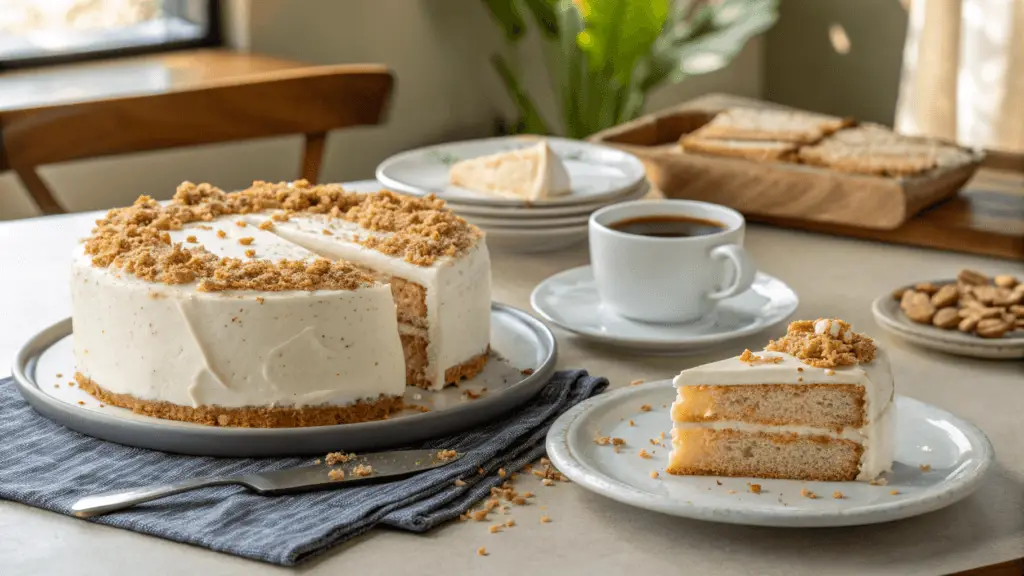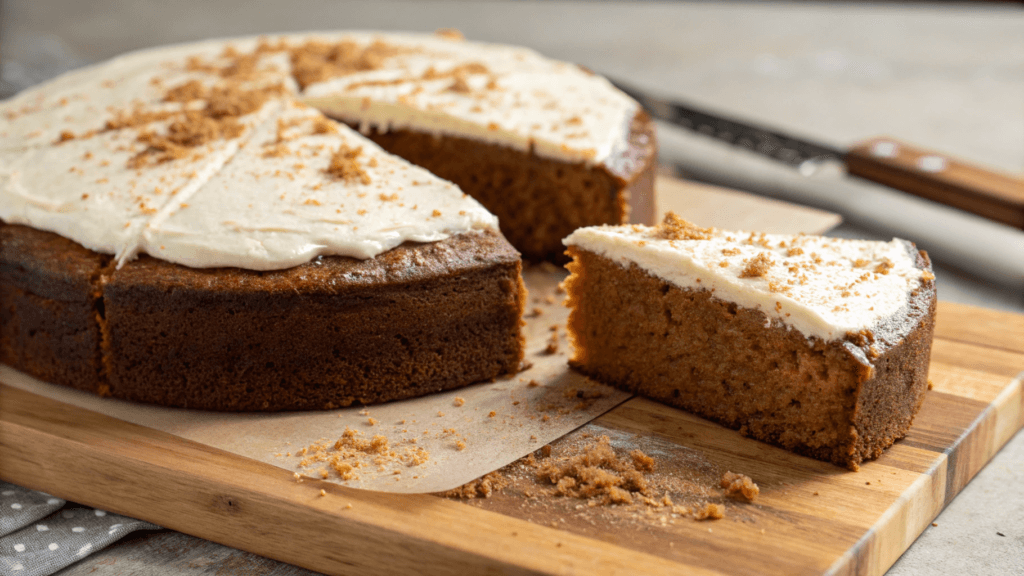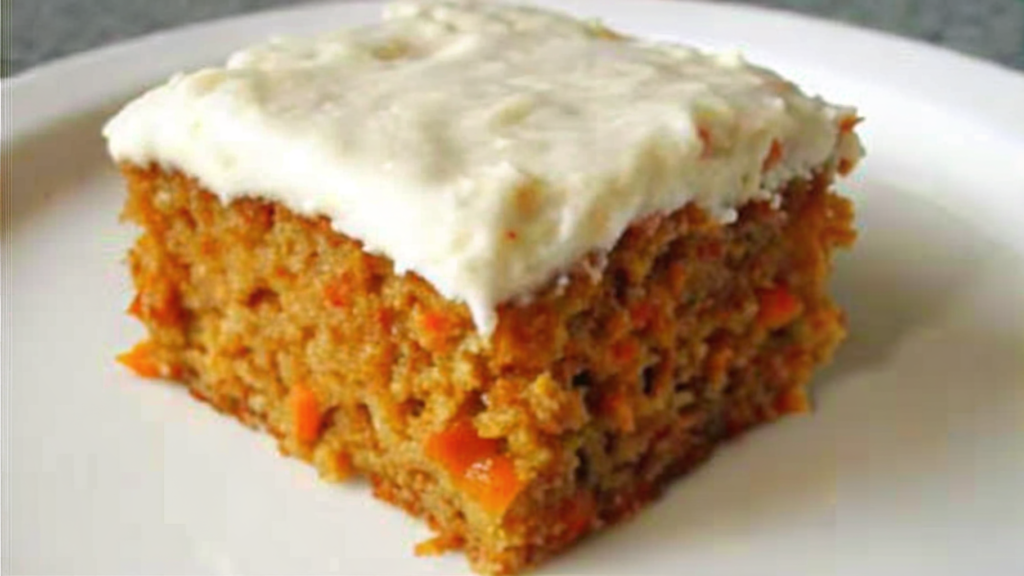In this article, you’ll discover a delightful and healthy dessert specifically tailored for people managing diabetes: a delicious sugar free carrot cake recipe for diabetic. We’ll cover all you need to bake the perfect carrot cake that’s tasty, satisfying, and blood-sugar friendly. From essential ingredients and simple baking steps, to nutritional insights, helpful tips, and exciting variations—you’ll be well-equipped to enjoy guilt-free desserts that support your health goals. Let’s get baking!
Understanding the Need for Sugar-Free Desserts for Diabetics
When managing diabetes, one of the toughest parts can be cutting back on sweet treats. Desserts, after all, tend to spike blood sugar, causing unwanted ups and downs in glucose levels. But does having diabetes mean saying goodbye to cakes forever? Absolutely not! Luckily, there’s a growing popularity of diabetic-friendly desserts, especially sugar-free carrot cake recipes for diabetics. They’re tasty, simple to bake, and help maintain steady blood sugar levels.
Diabetic dessert recipes often swap regular sugar with natural sweeteners, significantly reducing the glycemic impact. This approach allows diabetics to enjoy their favorite treats without worrying about health consequences.
The Popularity and Benefits of Carrot Cake in a Diabetic Diet
Carrot cake isn’t just popular because of its delightful taste; it’s packed with nutritional value, making it ideal for diabetics. Carrots naturally bring sweetness to the cake, minimizing the need for extra sweeteners. Plus, carrots have dietary fiber that helps slow down sugar absorption, thus preventing blood sugar spikes.
Moreover, diabetic-friendly carrot cakes often include ingredients like almond flour, coconut flour, and spices, adding both flavor and nutrition. Low-carb desserts like these don’t only satisfy cravings—they’re genuinely good for you! These healthier alternatives contribute vitamins, antioxidants, and healthy fats to your diet, boosting overall health while keeping glucose levels stable.
Stay tuned, because the next part will cover the essential ingredients you’ll need to bake your own delicious, diabetic-friendly carrot cake at home!

Essential Ingredients for a Diabetic-Friendly Carrot Cake
Selecting Natural Sweeteners Suitable for Diabetics
When making a sugar free carrot cake recipe for diabetic, choosing the right sweetener is key. Traditional sugar is out of the question, so you’ll need healthy alternatives that won’t raise blood sugar. Thankfully, there are plenty of natural sweeteners perfect for diabetic dessert recipes. For example, Stevia and Monk Fruit are popular because they’re calorie-free and don’t cause blood sugar spikes. Alternatively, Erythritol or Xylitol also work well, offering sweetness with minimal impact on glucose levels.
Always double-check sweeteners’ labels to avoid hidden sugars or artificial additives. By doing so, you’ll confidently bake desserts that taste delicious without unwanted surprises!
Choosing the Right Flour Alternatives: Almond and Coconut Flours
Another important decision when baking your sugar free carrot cake recipe for diabetic is picking flour alternatives. Regular wheat flour isn’t suitable since it quickly converts into sugar, raising blood glucose levels. Instead, almond flour and coconut flour make fantastic substitutes for baking without sugar.
Almond flour is not only low-carb but also rich in healthy fats and protein. It helps give cakes a moist and fluffy texture. On the other hand, coconut flour absorbs moisture rapidly, making your cake firm yet tender. Usually, it’s best to combine both flours to achieve the perfect balance of taste and texture.
Incorporating Healthy Fats: Oils and Dairy Substitutes
In diabetic-friendly cakes, choosing healthy fats matters just as much. Oils like coconut, avocado, or olive oil provide nutrients and moisture, keeping cakes tender and tasty. Additionally, these oils contain antioxidants beneficial for heart health, which is crucial for people managing diabetes.
For dairy substitutes, almond milk or unsweetened coconut milk make perfect replacements. They add creaminess without the added sugars or carbs found in traditional dairy products. Plus, they’re lighter, helping the cake remain airy and fluffy.
Spices and Additives: Enhancing Flavor Without Sugar
Spices play a vital role in your sugar free carrot cake recipe for diabetic, adding flavor without affecting blood sugar levels. Cinnamon, nutmeg, ginger, and cloves are ideal choices, providing warmth and sweetness naturally. These spices enhance flavor and offer additional health benefits—like better digestion and lower inflammation.
Extras like vanilla extract, lemon zest, and orange zest also boost taste without sugar. Including nuts like walnuts or pecans can add texture and healthy fats, making your carrot cake even more nutritious and delicious.

Step-by-Step Recipe for Sugar-Free Carrot Cake
Preparing the Ingredients and Necessary Equipment
To bake the perfect sugar free carrot cake recipe for diabetic, start by gathering ingredients and kitchen equipment:
- Almond flour and coconut flour
- Natural sweetener (Stevia or Monk Fruit)
- Grated carrots (freshly grated for the best flavor!)
- Eggs (at room temperature)
- Healthy oils (coconut or avocado oil)
- Spices (cinnamon, nutmeg, ginger)
- Baking powder and baking soda
- Nuts (optional for texture)
You’ll also need bowls, measuring cups, spoons, a whisk or mixer, parchment paper, and a baking pan.
Mixing the Batter: Techniques for Optimal Texture
Begin by preheating your oven to 350°F (175°C). In a bowl, whisk eggs with your chosen sweetener and healthy oil until smooth. Next, gently mix in grated carrots and vanilla extract.
In another bowl, combine almond flour, coconut flour, spices, baking powder, and baking soda. Gradually blend the dry ingredients into the wet mixture. Remember not to overmix, as it could result in a dense cake. Gently fold in nuts if you’re adding them, giving extra crunch and nutrients.
Baking Guidelines: Time and Temperature Considerations
Carefully pour the batter into a lined baking pan, smoothing the top with a spatula. Bake your sugar free carrot cake recipe for diabetic at 350°F for around 25-35 minutes, depending on your oven. Keep an eye on it! Insert a toothpick to check—it’s ready if it comes out clean. Avoid overbaking, as this could lead to dryness.
Cooling and Assembling: Ensuring the Perfect Finish
Once baked, remove the cake from the oven and let it cool in the pan for at least 10 minutes. Afterward, transfer it onto a wire rack to cool completely. This step ensures the cake remains moist and tender.
You may enjoy the cake as-is, or top it with a sugar-free cream cheese frosting to add extra creaminess and flavor. To decorate, sprinkle a pinch of cinnamon or add chopped nuts for the perfect diabetic-friendly treat.
Stay tuned, because next, you’ll learn about the nutritional benefits of this delicious diabetic-friendly carrot cake!
Nutritional Analysis and Health Benefits
Caloric Content and Macronutrient Breakdown
A key advantage of a sugar free carrot cake recipe for diabetic is that it’s not just tasty—it’s also nutritious. Typically, a slice of sugar-free carrot cake contains fewer calories than its traditional counterpart, thanks to healthier ingredients like almond flour and natural sweeteners. Almond flour adds protein and healthy fats, keeping you fuller longer without raising blood sugar.
In terms of macronutrients, the cake offers a good balance: healthy fats from oils and nuts, proteins from eggs and almond flour, and dietary fiber from carrots. This nutritional combo makes your carrot cake a guilt-free treat that supports your dietary needs.
Glycemic Impact: Understanding the Effects on Blood Sugar Levels
One major worry for diabetics is the glycemic index (GI) of foods they consume. The beauty of this sugar-free carrot cake lies in its minimal glycemic impact. By swapping sugar with natural sweeteners like Stevia or Monk Fruit, you significantly lower the cake’s GI, preventing rapid blood sugar spikes. Ingredients such as carrots and almond flour further reduce glycemic responses, thanks to their fiber content and lower carb levels.
Health Advantages of Key Ingredients Used
The ingredients in a sugar free carrot cake recipe for diabetic don’t just limit sugar intake—they also boost overall health. Carrots are rich in vitamin A and antioxidants, promoting healthy vision and immune function. Almond flour provides vitamin E and magnesium, supporting heart health and better blood sugar control. Coconut flour and healthy oils deliver good fats that improve cholesterol levels.
For more delicious recipes, you might enjoy exploring other diabetic-friendly dessert recipes on our site, ensuring you never have to compromise taste for health.
Variations and Substitutions for Diverse Preferences
Vegan Adaptations: Egg and Dairy Replacements
If you’re following a vegan diet, adjusting the sugar free carrot cake recipe for diabetic is simple. Instead of eggs, you can use flax eggs—just combine flaxseed meal and water. Applesauce or mashed bananas also work beautifully, adding sweetness and moisture without raising blood sugar.
Swap dairy products for plant-based options like unsweetened almond milk or coconut yogurt, making the cake both diabetic-friendly and completely vegan. These changes are easy and don’t sacrifice flavor or texture.
Nut-Free Options: Safe Alternatives for Allergies
Can’t have nuts? No worries! You can still enjoy this delicious cake by replacing almond flour with sunflower seed flour or pumpkin seed flour. These seed-based flours offer similar nutrients and textures, making them perfect substitutes.
Also, using oat flour or chickpea flour can deliver a tasty, nut-free, diabetic-friendly treat that’s equally moist and delightful.
Flavor Twists: Adding Fruits and Other Enhancements
To shake things up, try adding fruits to your sugar-free carrot cake. Fresh blueberries, raspberries, or shredded coconut not only add vibrant flavors but also antioxidants and fiber. Spicing things up further, a little orange zest or a splash of lemon juice can brighten the cake’s flavor profile.
These flavorful twists mean you never get bored, turning one simple cake into endless delicious variations. Whether you’re baking for yourself or sharing with loved ones, your creativity ensures everyone enjoys your healthy masterpiece.
Stay tuned for baking tips and common pitfalls to avoid, ensuring your sugar-free carrot cake turns out perfect every single time!
Tips for Baking Success and Common Mistakes to Avoid
Ensuring Moisture and Preventing Dryness in the Cake
One common challenge with baking a sugar free carrot cake recipe for diabetic is maintaining moisture. Thankfully, using healthy fats like avocado or coconut oil helps keep the cake moist. Additionally, avoid overmixing the batter, as this could lead to a dense, dry texture. Baking at the right temperature and checking frequently near the end prevents overbaking, another common cause of dryness.
Achieving the Desired Sweetness Level Without Sugar
Finding the ideal sweetness without sugar can seem tricky, but it doesn’t have to be! Gradually add natural sweeteners like Stevia or Monk Fruit, tasting as you go to avoid overly sweet or bitter flavors. Carrots naturally sweeten the cake, reducing the amount of sweetener needed. Don’t forget, spices like cinnamon and nutmeg also enhance sweetness, so use them generously.
Storage Recommendations to Maintain Freshness
Proper storage is essential for freshness. After baking your carrot cake, let it cool completely before storing. Wrap the cake in cling film or place it in an airtight container to preserve moisture. Storing the cake in the refrigerator extends freshness up to five days. For longer storage, freezing individual slices ensures you can always enjoy a slice of your tasty diabetic-friendly treat anytime!

FAQs
Can I Freeze Sugar-Free Carrot Cake for Later Consumption?
Absolutely! Freezing your sugar free carrot cake recipe for diabetic is a fantastic idea. Simply slice the cake, wrap individual pieces tightly, and freeze. This allows you to easily grab a piece whenever cravings strike, keeping your cake fresh and flavorful for up to three months.
What Are the Best Sugar Substitutes for Baking in Diabetic Recipes?
The best substitutes are Stevia, Monk Fruit, Erythritol, or Xylitol. These natural sweeteners provide sweetness without significantly affecting blood glucose levels. They work well in baking and taste great, making your desserts safe and enjoyable for diabetics.
How Can I Ensure My Carrot Cake is Moist Without Adding Sugar?
The secret to moistness without sugar lies in using healthy fats like coconut or avocado oil, choosing the right flour combination (almond and coconut flours), and adding moisture-rich ingredients like fresh carrots or applesauce. Follow these tips, and your sugar-free carrot cake will always come out moist and delicious!
Coming up next, we’ll wrap up by encouraging you to explore even more diabetic-friendly baking adventures!
Conclusion and Encouragement for Diabetic-Friendly Baking
Embracing a Healthier Lifestyle with Delicious Alternatives
Adopting healthier eating habits doesn’t mean giving up your favorite desserts. With tasty alternatives like this sugar free carrot cake recipe for diabetic, you can easily enjoy sweet treats without guilt or worry. The cake offers wonderful flavors, satisfying your cravings while still protecting your health. So don’t hesitate—embrace this deliciously healthy lifestyle today!
Inviting Readers to Experiment and Share Their Experiences
Trying new recipes can be a fun adventure, and baking this sugar-free carrot cake is no exception. Feel free to experiment with different flavors, ingredients, or toppings. After all, baking should be enjoyable and creative. We encourage you to share your baking journey, tips, and successes in the comments. Your experience might just inspire others to discover the joy of diabetic-friendly baking!
Print
The Ultimate Guide to a Sugar-Free Carrot Cake Recipe for Diabetics
- Prep Time: 15 minutes
- Cook Time: 35 minutes
- Total Time: 50 minutes
Ingredients
Almond flour
Coconut flour
Grated fresh carrots
Natural sweeteners (Stevia or Monk Fruit)
Eggs (or flax eggs for vegan version)
Coconut or avocado oil
Unsweetened almond or coconut milk
Baking powder and baking soda
Cinnamon, nutmeg, ginger
Vanilla extract
Optional nuts (walnuts or pecans)
Instructions
Preheat oven to 350°F (175°C).
Mix eggs, sweetener, oil, and vanilla.
Combine almond flour, coconut flour, spices, baking powder, and baking soda separately.
Gradually blend dry ingredients into wet mixture; fold in grated carrots and nuts.
Pour batter into lined pan; bake 25–35 minutes.
Cool cake completely before frosting or slicing.
Nutrition
- Serving Size: 1 slice (approx. 1/12 cake)
- Calories: 180 kcal
- Sugar: 2 g (natural sugars, no added sugar)
- Sodium: 150 mg
- Fat: 14 g
- Saturated Fat: 3 g
- Unsaturated Fat: 11 g
- Carbohydrates: 9 g
- Fiber: 4 g
- Protein: 6 g
- Cholesterol: 45 mg


1 thought on “The Ultimate Guide to a Sugar-Free Carrot Cake Recipe for Diabetics”